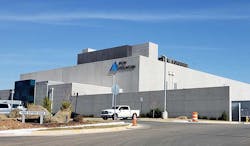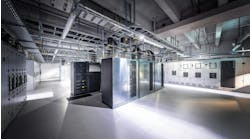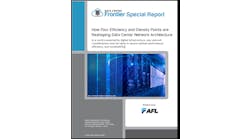The Data Center Frontier Executive Roundtable features insights from industry executives with lengthy experience in the data center industry. Here’s a look at the insights from Eric Boonstra of Iron Mountain Data Centers.
Here’s the full text of Eric Boonstra’s insights from our Executive Roundtable:
Data Center Frontier: What will delivery timetables for new data center capacity look like in 2023? Will the combo of supply chain issues, power constraints and staff shortages have an impact on supply?
Eric Boonstra: Although we’re looking in the rear-view mirror of the pandemic, we can’t say that everything is solved considering supply chain issues in the data center industry, as power constraint markets are becoming the norm rather than the exception in some parts of the world. The good thing is that we secured land and power in the regions where we have planned new capacity in 2023 and 2024 so from that perspective we don’t expect constraints, just some delays.
Shortages on the labor market remain critical in delivering capacity on time and keeping the lights on in data centers. It's no secret to anyone who works in this industry that it can be challenging to deliver capacity on time while everybody is working extremely hard to meet customer demands, and we don’t see a significant change for 2023 as demand hasn’t slowed down.
Also sustainability in the supply chain is a greater factor than it ever was before, with more standards and regulations being implemented in 2023. We decided to build all our new facilities and expansions via the BREEAM sustainable building standard. But in Germany for example, starting January 1st 2023, the Supply Chain Diligence Act will come into play, which requires businesses to monitor their entire supply chains and report on partners causing environmental degradation. This might just be a first step as the EU is working on legislation that might go even further.
Data Center Frontier: What’s the state of the edge computing market, and how does it compare to your expectations? What are the use cases that are gaining traction?
Eric Boonstra: Demand in the edge market is definitely taking up, as research by the Uptime Institute indicates that the portion of owners/operators using more than 20 Edge data centers today is likely to double in the next two to three years, from 9 percent now to 20 percent in two to three years.
Driving demand for edge are telecom networks, IoT for energy production, video streaming and cloud gaming, retail and public transport apps, as well as multi-point next-gen Industry 4.0 apps.
In general It is hard to define the ‘’Edge computing market’’ and the state of it as one sort or type. Edge facilities have so many use cases and add a complimentary extra layer to the data center infrastructure world. But it is sure that what we call edge is a growing segment where smaller footprint facilities will offer rapid deployment, autonomous operation and global integration to support both current and future applications.
Data Center Frontier: How would you assess enterprise IT demand, and what do you see ahead in 2023?
Eric Boonstra: It is interesting to see that Gartner predicts that global IT spending will climb to $4.6 trillion in 2023, registering a year-over-year increase of 5.1%. This basically makes enterprise IT spending ‘’recession-proof,’’ although tech stocks dropped significantly this past year.
I feel that IT demand for enterprises is a wide net, where some are working fully in hybrid multi-cloud platform environments while others are just starting their journey by taking their IT infrastructure off-prem. If one thing stays through throughout the years, that is that digital transformation is reshaping and creating new revenue streams for enterprises. So rather than slowing or declining, enterprise companies, large and smaller, keep investing in their IT spend, and we see that as a data center operator with a global portfolio across the board.
Data Center Frontier: What will be the important themes in sustainability in 2023 for data centers and cloud operators?
Eric Boonstra: To take one step back first, I think it's worth mentioning that the industry’s shift to renewables has had a huge impact over the past years. So much so that, despite the exponential growth in ICT demand, power usage and emission levels have not risen proportionally. According to the IEA, between 2015 and 2021 Internet traffic rose by 440% and data center workloads by 260%, while data center energy usage rose by between 10 and 60%.
The cloud and colocation industry has been a key driver of progress through encouraging renewable investment and ‘greening the grid’ along the way.
Despite great progress, we still have a long way to go as an industry and for us in 2023, further implementing our commitment to 100% clean electricity,100 percent of the time in all our data centers by 2040 through 24/7 clean energy tracking is the main point of focus.
For the industry as a whole sustainability can only be improved through collaboration across the industry and with governments and standards organizations. So ongoing efforts in improving collaboration and legislation, next to making everybody in the industry aware that we can be part of the solution instead of the problem as ‘’we are in this together’’ must continue to be repeated.







